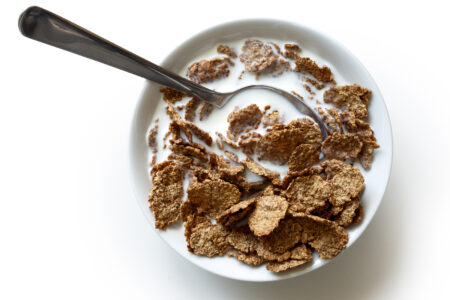When you’re trying to get out of the door in the morning, nothing screams “breakfast fast” like cereal. But what are the healthiest options? Follow these seven tips:
- Skip the health claims on the front of a package. This is typically marketing copy, not nutrition information. Go to the nutrition label for what’s actually inside the box.
- Choose whole grains. Refined grains (think: cornflakes) have been stripped of nutrients. Whole grains, such as corn, brown rice, oats and wheat, provide many of the vitamins and minerals your body needs, and they reduce the risk of heart disease. Bonus: Whole grains take longer to digest, so you feel full for longer periods. The first ingredient should say “100% whole” type of grain, and you should see a yellow stamp from the Whole Grains Council on the box.
- Watch out for sugar and salt. Some cereals pack as much sugar in one serving as that found in three chocolate chip cookies. Too much sugar increases glucose levels too quickly. Aim for cereals with 10 grams or less per serving. And though you usually can’t taste the salt in cereal, you may be surprised by the amount of sodium in some brands. Look for brands that contain 220 mg or less per serving.
- Go for high fiber. Studies show a diet high in fiber can cut your risk for both heart disease and type 2 diabetes, but most of us get only about 16 grams of fiber a day. The recommended amount is 38 grams for men and 25 grams for women. Select a cereal that has at least 5 grams of fiber per serving.
- Add protein. Top your cereal with nonfat Greek yogurt; it has enough protein to help you feel full. If dairy is a problem, soy yogurt is a good alternative.
- Heat it up. Hot oat bran, steel-cut oats, millet and quinoa are full of fiber, and the unflavored versions have no sugar.
- Mind your portions. A cereal serving size can vary from 1/2 cup to more than one cup, but most of us have much more than that in one sitting. Don’t try to eyeball a serving; use a measuring cup.






